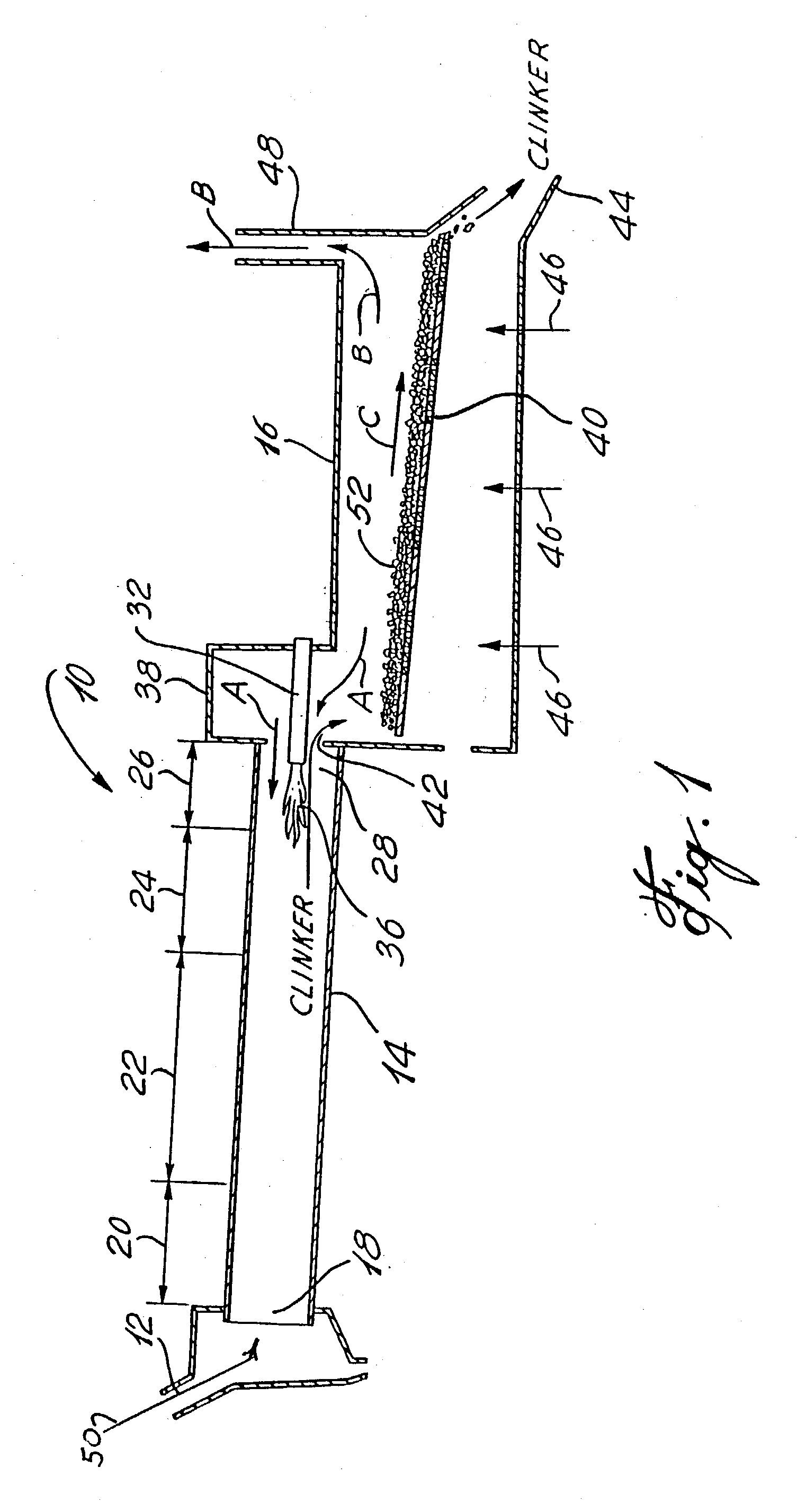Process for incorporating coal ash into cement clinker
a cement clinker and coal ash technology, applied in the direction of furnaces, lighting and heating apparatuses, furnace types, etc., can solve the problems of large quantities produced still presenting disposal problems, fine particles can present handling problems,
- Summary
- Abstract
- Description
- Claims
- Application Information
AI Technical Summary
Benefits of technology
Problems solved by technology
Method used
Image
Examples
example
[0068] i) Trials
[0069] Different formulations of clinker feed ingredients are summarized below in the Table, to demonstrate the variation of contribution of Ca, Al, Si and Fe to the resulting clinker, that can be achieved by replacement of different amounts of limestone (calcium carbonate) by different amounts of coal ash, in accordance with the invention.
1 MIX 1 SiO.sub.2 % Al.sub.2O.sub.3 % Fe.sub.2O.sub.3 % CaO % % used Limestone 1 12 2.8 1.5 43 46 Limestone 2 5 0.9 0.5 52 43 Ash 42 21 5.6 11 6 Iron 56 0.7 sand 734 mix chemistry 14 3.2 1.7 43 clinker 22 5 2.7 66 chemistry C2S 14.5 C3S 63 C3A 8.8 C4AF 8.22
[0070]
2 MIX 2 SiO.sub.2 % Al.sub.2O.sub.3 % Fe.sub.2O.sub.3 % CaO % % used Limestone 1 12 2.8 1.5 43 45 Limestone 2 5 0.9 0.5 52 42 Ash 35 21 5.6 17 11 Iron 56 0.7 sand 734 mix chemistry 13.5 3.9 1.5 43.1 clinker 21 6 2.4 66.6 chemistry C2S 12.2 C3S 63 C3A 12 C4AF 7.16
[0071]
3 MIX 3 SiO.sub.2 % Al.sub.2O.sub.3 % Fe.sub.2O.sub.3 % CaO % % used Limestone 6.7 0.4 0.7 51 81 Ash 46 17 ...
PUM
| Property | Measurement | Unit |
|---|---|---|
| Length | aaaaa | aaaaa |
| Length | aaaaa | aaaaa |
| Length | aaaaa | aaaaa |
Abstract
Description
Claims
Application Information
 Login to View More
Login to View More - R&D
- Intellectual Property
- Life Sciences
- Materials
- Tech Scout
- Unparalleled Data Quality
- Higher Quality Content
- 60% Fewer Hallucinations
Browse by: Latest US Patents, China's latest patents, Technical Efficacy Thesaurus, Application Domain, Technology Topic, Popular Technical Reports.
© 2025 PatSnap. All rights reserved.Legal|Privacy policy|Modern Slavery Act Transparency Statement|Sitemap|About US| Contact US: help@patsnap.com


